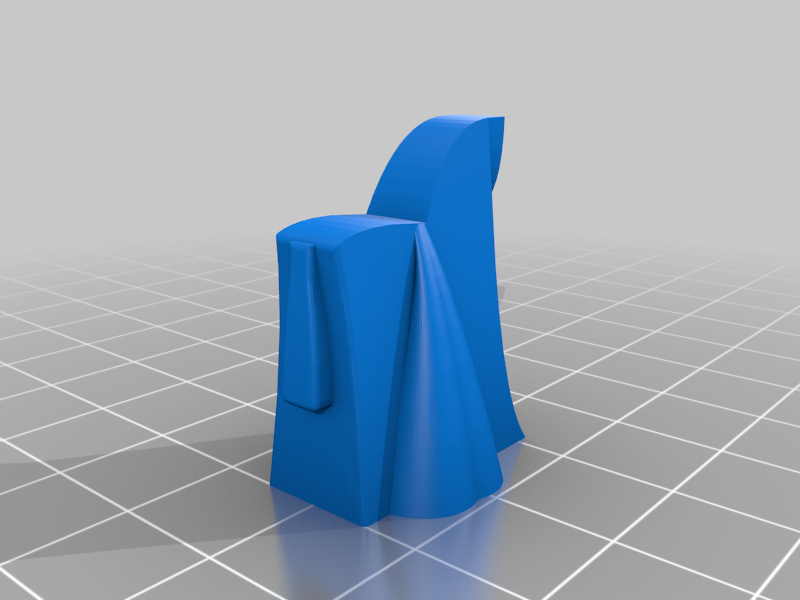
Persian/Early Medieval Chess Set
thingiverse
This is a set of 3-D printing programs for a chess set representative of those in use in the Middle East throughout the Middle Ages, and in Europe prior to circa 1200. Most of the designs are loosely based on the 8th-century carved ivory chess pieces found in Nishapur, Khorasan, northeastern Iran. The Knights, as well as the optional octagonal-section Pawn, are derived from a slightly later Persian ceramic chess set in the collection of the Metropolitan Museum of Art, NYC. The octagonal-section pawns are easier to pick up than the pyramid-shaped Nishapur Pawns. Chess pieces of these forms were used in Europe prior to 1200. If you would like to play with chess equipment that might have been familiar to Charlemagne, Alfred the Great, Brian Boru, Harold Godwinson, and Eleanor of Aquitaine, these designs will fit the bill. Chess was originally played on an uncheckered board, with the spaces simply outlined. In Europe, checkered boards replaced uncheckered boards between 1000 and 1200. Uncheckered boards remained the norm in Persia and the Middle East through at least the 15th Century. The Nishapur chess pieces were small; printed at 100%, these chess pieces will suit a chessboard with cells 1-1/16 inches/ 27 mm square. You can size these up (or down) to suit whatever size chessboard you choose. We designed this set with a burly King, who fills his square and dominates his surroundings. If you prefer a more obsequious King, you can print the Kings at 90% the size of the other pieces. The voids in the bases can be filled with lead to weight your chess set, or with rare earth to make your chess set magnetic. If you are going to stain, paint, and/or varnish your chess pieces, leaving the support material in the voids allows you to hold the chess pieces on skewers while you do this. Red-and-black and red-and-green were popular colors for Persian chess pieces; while white-and-black became prevalent in Europe. If you wish to play by early Medieval chess rules, the Pawns only move by one space at a time, even on their first move. Queens move diagonally by one space only. Bishops move diagonally by a leap of two spaces, and they may leap over a piece in the intervening cell. There was no castling of King and Rook. Pawns usually promoted to a Queen, though local traditions varied. Chess was generally played by these rules, until Queen, Bishops, and Pawns gained their modern moves around 1490. Simon Spalding fullersteaching@yahoo.com ***** This project was a collaboration between Simon Spalding, a historian knowledgeable in too many subjects to note here, and myself, an enthusiastic amateur willing to attempt to translate his drawings into three dimensions. This is the first of a number of historical game sets we have been working on, made in Tinkercad, but as I continue to build up skills with other programs I hope to improve the overall look of the pieces. As it stands, some of the curves were beyond my abilities to recreate to my satisfaction with the tools on hand, so I may try to take another pass on this when I can. Any questions about the historical nature of this set can be addressed to Simon at the email address above, and I will try to answer anything on modelling or future edits here in comments. -Ian R.
With this file you will be able to print Persian/Early Medieval Chess Set with your 3D printer. Click on the button and save the file on your computer to work, edit or customize your design. You can also find more 3D designs for printers on Persian/Early Medieval Chess Set.
